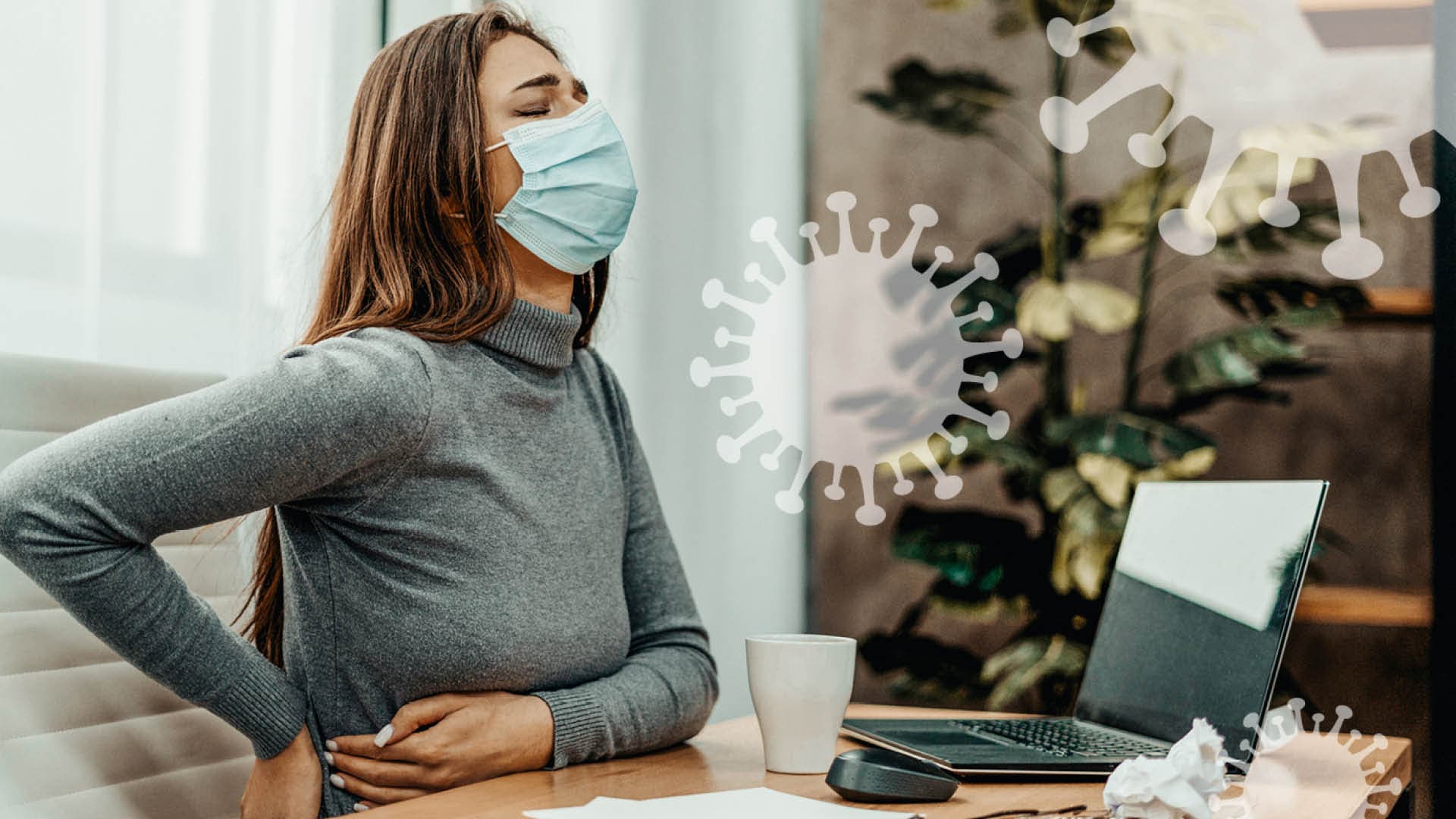Back pain as a symptom of infections
How Covid-19 patients relieve back pain

How Covid-19 patients relieve back pain
As if a positive test result in combination with a fever, coughing fits and a sore throat wasn't enough. More and more coronavirus-positive people are affected by severe back pain, which makes recovery from the coronavirus even more difficult. According to the Federal Office of Public Health (FOPH), although back pain is not listed as a separate coronavirus symptom, coronavirus-positive people are increasingly affected by back pain. But where does the back pain come from and what can those affected do to alleviate it effectively and quickly?
Where does the back pain in Covid patients come from?
Anyone who suffers from chronic back pain knows the effects and the severe impairment of quality of life. The cause of chronic back pain varies depending on the course of the disease and is treated with the appropriate therapy method. But can back pain also be linked to the virus? According to back specialist Urs Steinmann-Gartenmann, the virus does not reach the back nerves via the nasopharyngeal nerve tracts, but primarily the brain. He therefore does not recognise a direct link between back pain and corona. Rather, back pain would be a secondary phenomenon. Accordingly, coronavirus patients suffer more from back pain because the body is weakened by the virus. (Source: 20 Minuten article from 14 January 2021).Vermehrte Rückenschmerzen sind seit dem Ausbruch des Covid-19 häufig auf die folgenden Ursachen zurückzuführen:
Lack of exercise due to isolation (lack of drive, lack of motivation, etc.)
Non-ergonomic workstations in the home office (unhealthy posture)
Back pain as a secondary phenomenon in an acute corona infection
Sleepless nights due to severe back pain
Since the corona pandemic, more and more people have been suffering from back pain. People who have not yet been confronted with back problems are also affected. For example, a 45-year-old coronavirus patient in Zurich was plagued by back pain every morning. This pain robbed him and his wife of sleep. What helped? "Just a hot bath," said the father of the family. Others even mentioned back pain as the first or only symptom of an acute coronavirus infection. (Source: 20 Minuten article from 14 January 2021).
How Covid-19 patients relieve back pain quickly and effectively
Back problems are often approached incorrectly, which is a major problem and prevents a fast, effective healing process. For example, due to their daily workload and lack of time, many patients resort to medication to numb their back pain. However, there is no question of combating the cause. There is also a risk of becoming dependent on them or triggering further side effects. Their effect is often correspondingly short-term and unsatisfactory. Heat therapy, on the other hand, can effectively support the long-term healing process. It has been a proven healing method for centuries.

«Treat your areas of pain with deep heat at the trigger points and enhance the success of the therapy with plenty of movement and suitable physiotherapy exercises. Many of my patients find the combination of movement and heat to be an effective therapy method.»
Mirko Cortese, Naturopath and Therapist
Why Covid patients with back pain should rely on Calopad
Regardless of whether back pain was triggered as a coronavirus side symptom, due to non-ergonomic workstations in the home office or other causes: To relieve the pain quickly and effectively, the blood circulation in the tissue and muscles must be stimulated. The application of heat is ideal for this. This allows the muscles to regenerate, relax and detoxify. The optimum effect is achieved with a constant temperature of 42°C. This is the therapeutic deep heat. This is the therapeutic deep heat required for optimum healing. With its immediate deep heat, the medically certified Calopad heat plaster fulfils all the requirements for lasting relief from back pain and neck tension.
Patients are best advised to use the reusable Calopad heat plaster in combination with physiotherapy exercises (soon available in the Calopad Physio app).
The following therapy methods are also recommended:
Hot relaxation bath
Relaxation exercises such as meditation (deep relaxation)
Regular stretching
Kneipp therapy
Quellen